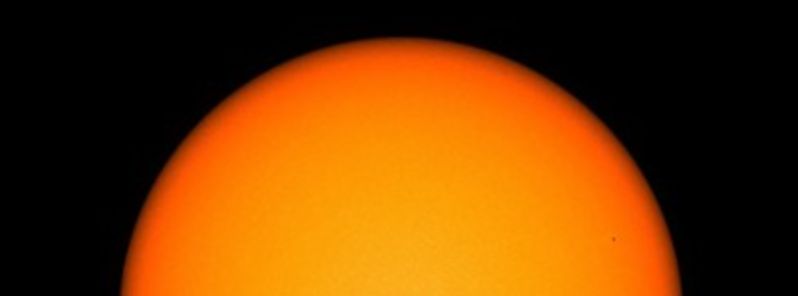Photon braking effect slowing down the Sun

In a breakthrough study, the astronomers from the University of Hawai'i Institute for Astronomy, Brazil, and Stanford University, discovered a physical mechanism that plays a crucial role in slowing down the outer layers of the Sun.
About twenty years ago, the scientists discovered that the outer 5% of our Sun spins at a slower rate than the rest of its layer. However, this is the first time, the research managed to answer the question about the mechanism responsible for it.
The scientists have utilized the data collected by the NASA's Solar Dynamics Observatory and the Helioseismic and Magnetic Imager satellite. The data measured a sharp down turn in the star's rotation rate in its outer 150 km (93.2 miles) layer.
“This is a gentle torque that is slowing it down, but over the Sun’s 5 billion year lifetime it has had a very noticeable influence on its outer 35 000km (21 748 miles)," said Jeff Kuhn, the leader of the research.
“The Sun won’t stop spinning anytime soon, but we’ve discovered that the same solar radiation that heats the Earth is ‘braking’ the Sun because of Einstein’s Special Relativity, causing it to gradually slow down starting from its surface," he explained.
An average rate of the Sun's rotation on its axis is about once per month, although the rotation cannot be compared to the one which solid Earth or a spinning disk experiences, as the rate of the rotation depends on the solar latitude and the distance from the star's center. The research describes the mechanism, named 'photon-braking effect' in detail and explains how it should work in most stars.
The change in the rotation rate at the surface of the Sun affects the large-scale solar magnetic field, and the scientists are currently working to understand how the solar magnetism, extending into the corona and the Earth's environment will be impacted by a discovered brake effect.
Featured image: An image of the Sun taken with The Helioseismic and Magnetic Imager (HMI) on the Solar Dynamics Observatory spacecraft. Image credit: NASA

Commenting rules and guidelines
We value the thoughts and opinions of our readers and welcome healthy discussions on our website. In order to maintain a respectful and positive community, we ask that all commenters follow these rules.